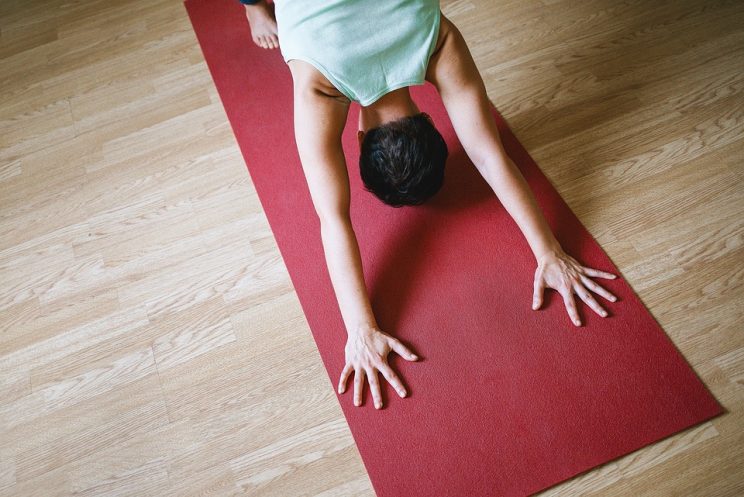Physical Activity Basics, Benefits and Safety
If you are like most people you may feel that you do not have a full understanding about physical activity and its benefits. You may also sometimes be unsure about whether or not it is safe for certain patients.
This module will provide you with a basic understanding of physical activity principles, an overview of the documented physical and mental health benefits of physical activity and some guidelines surrounding the safety of physical activity for the patients you care for!
Fast Fact:
What’s the difference between “physical activity” and “exercise”?
- Physical activity is any movement that involves the contraction of muscles (e.g., gardening, walking, housework, playing sports, running).
- Exercise is a type of physical activity that is planned and done purposefully for health benefits or to increase fitness.
Physical Activity Basics
There are three different kinds of physical activity that are recommended for most people in the general population: cardiovascular, resistance, and flexibility exercise.
Cardiovascular (Aerobic) Exercise

Cardiovascular exercise is physical activity that uses the large muscles of the body in a rhythmic fashion. The outcome of regular cardiovascular exercise is increased cardiorespiratory fitness (the heart and lungs work better). Examples include brisk walking, cycling, swimming, cutting the lawn, and playing tennis.
Resistance (Strength Training, Weight Training) Exercise

Resistance exercise is physical activity that
involves weight or resistance that
makes muscles work hard and
become stronger. Some
examples include lifting weights,
doing push-ups, and exercising
with resistance bands.
Flexibility (Stretching) Exercise
Flexibility exercise is physical activity that increases the range of motion around a joint or set of joints. Flexibility exercise reduces risk of injury, relieves tension and soreness, and may contribute to relaxation. Gentle stretching, yoga, and Tai Chi Chuan are examples of flexibility exercise.

Physical activity programs can be developed using the FITT principle as a framework:
- Frequency: The number of physical activity sessions in a given period (e.g., in a week). Physical activity sessions can be performed daily or over several different days in a week. A common frequency is 3 to 5 times per week of physical activity.
- Intensity: How hard an individual is working during physical activity. Moderate and/or vigorous intensity physical activity is recommended for most individuals for achieving health benefits. Moderate intensity physical activity refers to activities that increase heart rate and involve some sweating yet still allows the exerciser to have a conversation (e.g., brisk walking, moderate cycling; 50-70% of maximum heart rate). Vigorous intensity physical activity refers to activity that involves an even faster heart rate and makes the exerciser feel breathless and able to only say a few words at a time (e.g., running, aerobics; 70-85% of maximum heart rate). Moderate or vigorous intensity physical activity is included in the Canadian Physical Activity Guidelines.
- Time: How long each physical activity session lasts. In order to achieve health benefits, sessions should be at least 10 minutes in duration. A common duration (time) for physical activity sessions is 30 to 60 minutes.
- Type: Refers to the kind of activity. Any activities that get heart rate up, such as walking, running, aerobics, gardening, and cycling can be included.
Keys to Improving Fitness and Health using the FITT Principle
Progression
A common mistake that people make is that they do the same exercises at the same intensity, frequency, and for the same duration (time) for months on end. Although this is better than being sedentary, this kind of exercise program does not maximize fitness and health benefits because our bodies are good at adapting to the physical challenges they are faced with.
By progressing the fitness program, optimal health and fitness can be achieved. The FITT principle factor that is often progressed first is Time (duration) of individual physical activity sessions.
An example of progression may involve gradually increasing the Time of physical activity sessions from 30 to 45 minutes. The next step may be increasing the Frequency of physical activity sessions per week up to 3 to 5 by gradually adding additional days of planned exercise. Finally, once Time and Frequency are maximized, Intensity may be progressed. During this time, rotating Type of activity will reduce risk of injury and boredom.
Important to Consider
It is important to remember that when increasing physical activity, it is best to do so gradually. People who are very deconditioned should start off with low intensity activity, short sessions (time), low frequency, and a type of activity that is comfortable.
For example, easy walking for 15 minutes three times per week may be an appropriate starting point for a person who is very deconditioned. People with a higher level of fitness could participate in a program with higher intensity, time and frequency. It is wise to start small and gradually build the components of the FITT principle to avoid injury and demotivation.
“If physical activity were a pill, it would be the most widely prescribed drug in the world.”1,2
Regular physical activity can help patients prevent and manage a wide range of physical and mental health problems, as well as help them manage stress and maintain a good quality of life!
Physical activity can prevent or manage:
|
Physical activity can help improve or maintain:
|
Fast Fact:
The History of Physical Activity
For the vast majority of human history, people had to be very physically active in order to survive. It is been estimated that our ancestors walked on average 8 to 16 kilometres per day foraging and hunting for food! Lifting, carrying, leaping, stretching and climbing were also activities that were carried out regularly as a part of daily life.3
Think about how this lifestyle differs from the modern lifestyle, yet our physiology is very much the same as that of our ancestors!
Physical Activity and Obesity
Approximately 20% of Canadians aged 18 years and older are considered obese and an additional 35% can be classified as overweight4. Among Canadian youth aged 12 to 17 years, 6% are considered obese and an additional 17% are overweight5.
Obesity and overweight are associated with an increased risk of metabolic syndrome, Type 2 diabetes, hypertension, coronary artery disease, stroke, respiratory problems, cancer, infertility, osteoarthritis, and liver and gall bladder disease6. It is very important for all people to try and maintain a healthy body weight in order to maximize health!
Being physically active and reducing sedentary time can possibly help with maintenance of a healthy body weight and assist in weight loss for those who are overweight or obese7.
Safety of Physical Activity
You might be wondering if physical activity is safe for patients, especially those who have a chronic disease or are receiving some kind of treatment. There are several steps that are recommended to ensure the safety of the patients that you care for as they become more physically active.
The Canadian Society for Exercise Physiology has developed a one page screener called the “PAR-Q” which can be self-administered and can help patients determine if they should see a doctor before increasing physical activity. If patients honestly answer “No” to all of the questions on the PAR-Q, they can typically proceed with increasing their physical activity levels with minimum risk. If they answer “Yes” to any questions, they should consult with a doctor to determine what types of physical activity are safe.
Key Points:
- Physical activity can consist of cardiovascular, resistance, and/ or flexibility exercises.
- The FITT principle forms the basis of exercise prescription.
- Progression refers to incrementally increasing components of the FITT principle to maximize health and fitness benefits.
- Physical activity has a number of physical and mental health benefits.
- The PAR-Q can be used as a screener to determine which patients need to see a doctor before starting a physical activity program.
After reviewing this module you should now have a better understanding of the basic principles of physical activity. You should be more familiar with the documented benefits of physical activity as well as the utility of the PAR-Q as a screener for physical activity readiness. In the next module you will learn about physical activity and sedentary behavior guidelines that will help you make appropriate recommendations for the patients you care for.
Please click on the link below to start the quiz.
References
- Warburton DER, Nicol CW, Bredin SSD. Health benefits of physical activity: the evidence. 2006;174, 801-809.
- Carek PJ, Laibstain SE, Carek SM. Exercise for the treatment of depression and anxiety. Int J Psychiatry Med. 2011;41, 15-28.
- O’Keefe JH Jr, Cordain L. Cardiovascular disease resulting from a diet and lifestyle at odds with our Paleolithic genome. How to become a 21st-century hunter-gatherer. Mayo Clin Proc. 2004;79, 101-108.
- Statistics Canada. Overweight and obese adults (self-reported), 2014. http://www.statcan.gc.ca/pub/82-625-x/2015001/article/14185-eng.htm Retrieved September 1, 2015.
- Statistics Canada. Overweight and obese youth (self-reported), 2014. http://www.statcan.gc.ca/pub/82-625-x/2015001/article/14186-eng.htm Retrieved September 1, 2015.
- Kopelman P. Health risks associated with overweight and obesity. Obes Rev. 2007;8(suppl 1), 13-17.
- Fox KR, Hillsdon M. Physical activity and obesity. Obes Rev. 2007;8(suppl 1), 115-121.
